In many ways, 2022 has been a banner year for enterprises’ digital transformation strategies. Investment is set to grow by 46 percent over the next 12 months. And as organizations continue the race to the cloud, they are identifying how to make it meet their expectations, improve their agility, and reduce burdensome costs.
This leaves one final question – what about the people at the heart of much of this change, enterprise development teams? For the second year in a row, we wanted to use our annual survey of digital leaders to understand the relationship between IT decision makers and their development teams. This year, we worked with independent market research firm Vanson Bourne to survey 650 heads of digital transformation, including CIOs, CDOs and CTOs across the US, UK, France, Germany, Spain, Italy, Turkey and Israel. As well as investigating digital transformation successes (and challenges), and how far the cloud has progressed towards meeting its true potential, we wanted an updated view of the developer experience. What challenges are they reporting? What obstacles do CIOs face when attempting to support development teams? And what impact are they contributing to the business?
Contributing to the business
There is no question that developers drive technology adoption. In fact, sometimes they can drive it so fast they leave the rest of the business behind. 81 percent of respondents said that development teams were adopting the cloud and other technologies faster than the rest of the business could keep pace (Figure 1). Harnessing this energy and enthusiasm can provide real benefits to organizations and help drive advancements. 34 percent of respondents said that pressure from developers to support agile development and innovation was a critical success factor for digital transformation projects. Good for those developers for speaking up!
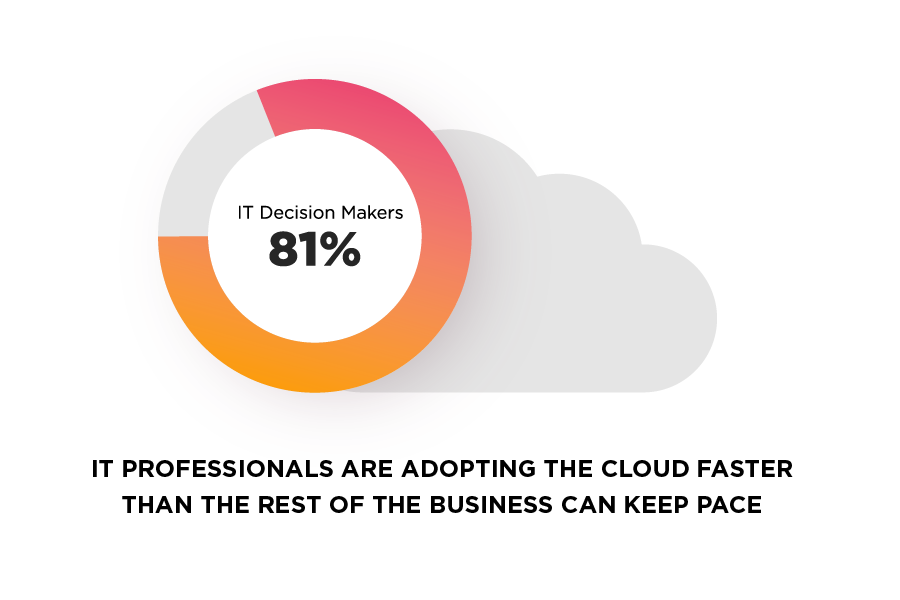
Figure 1
To get an understanding of developers’ overall contribution to the business, we asked respondents to choose between a selection of positive and less positive outcomes. What we found was that, overwhelmingly, developers were having a positive impact (Figure 2).
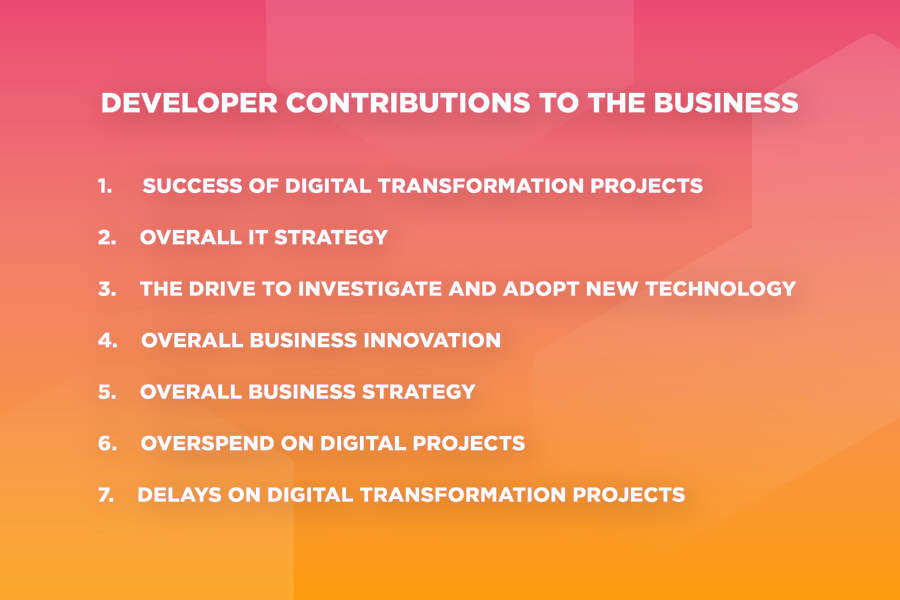
Figure 2
Not only are these contributions overwhelmingly weighted in favor of positive impacts, but there is also possible context for overspend or delays to take into account. For instance, if any overspend or delays occur while addressing a fatal flaw in a project, or to help the organization adapt to a rapidly changing market, then it’s hard to see it as a purely negative contribution.
Do teams have all they need?
While they make a positive contribution, it isn’t the case that CIOs feel that they give their teams all of the support and technology they would like. 86 percent of senior IT decision makers identified challenges in supporting their development teams – including redeploying teams rapidly when needed (32 percent), ensuring development teams have the right technology (31 percent), and even identifying and solving the challenges development teams face in the first place (31 percent). Finding a way to increase agility, visibility and communication is still critical as well (27 percent) (Figure 3).
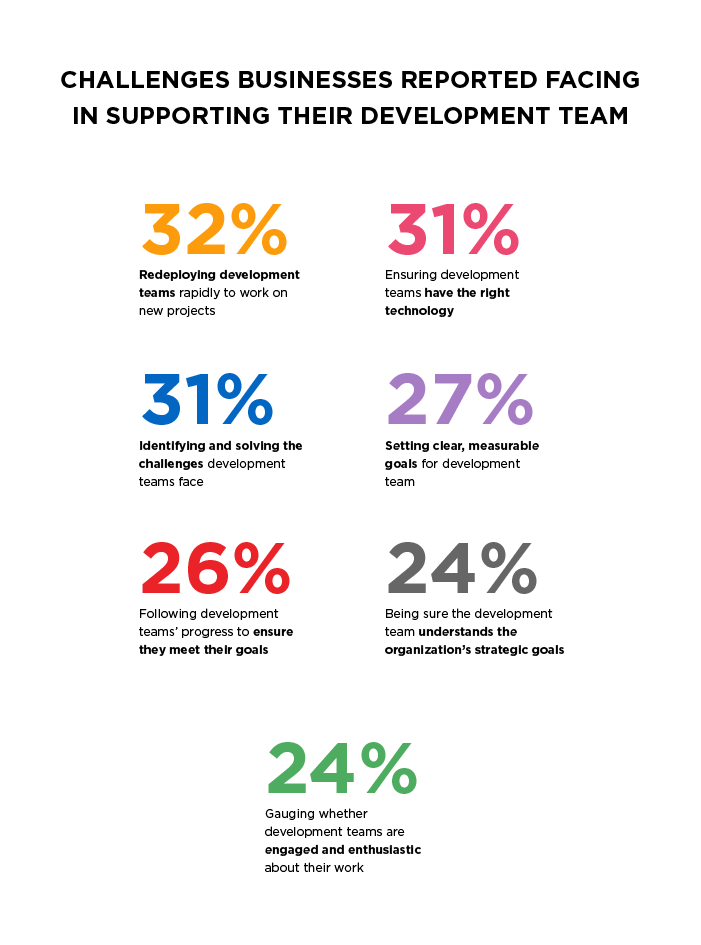
Figure 3
This difficulty in providing support is also evident to developers themselves based on what they ask of their management. 88 percent of respondents said their development teams had reported challenges, with the top issues including deadlines and agility requirements being difficult to meet (42 percent) and being asked to do too much with too little time (40 percent) (Figure 4).
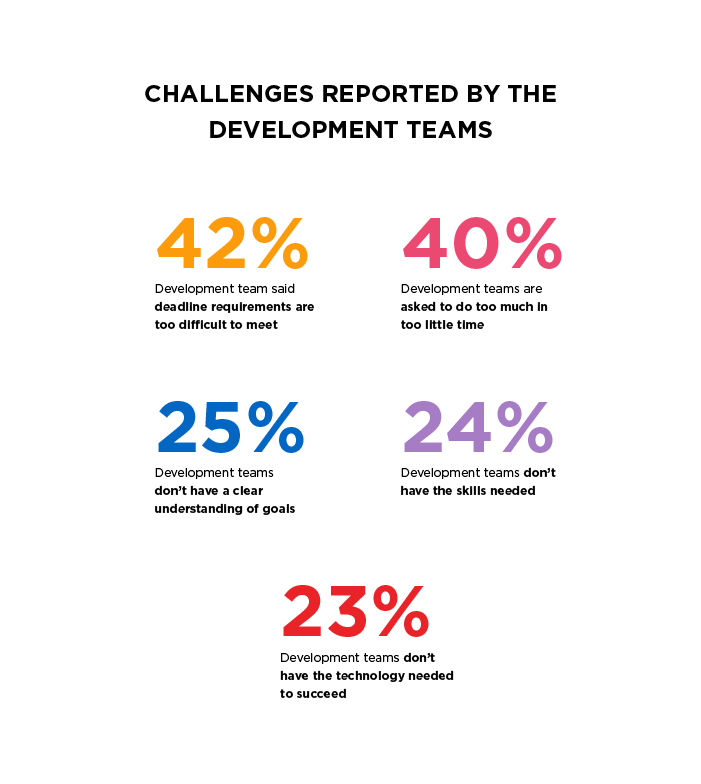
Figure 4
In an environment where organizations are competing in the race to the cloud and aiming to execute perfectly on their digital transformation initiatives, the practical impact of these issues can be significant. Falling behind is bad enough, but in a worst-case scenario developers could, instead of contributing to IT and strategic success, do just the opposite and slow it down. 19 percent of respondents said that their development team’s inability to meet goals set for them had prevented their organization from pursuing a new digital transformation project in the last 12 months. And 17 percent said that this same inability had caused projects to fail, suffer delays or otherwise. So, there’s still a one in six chance that projects don’t meet the mark.
Looking to the future
A lack of visibility, skills, technology and communication is preventing some organizations from making the most of their development teams’ potential and moving with greater agility. 40 percent of IT decision makers don’t know for sure whether their development teams are ahead of or behind schedule. On the other hand, the other 60% of respondents have the knowledge or at least confidence that their teams are ahead of schedule. (Figure 5).
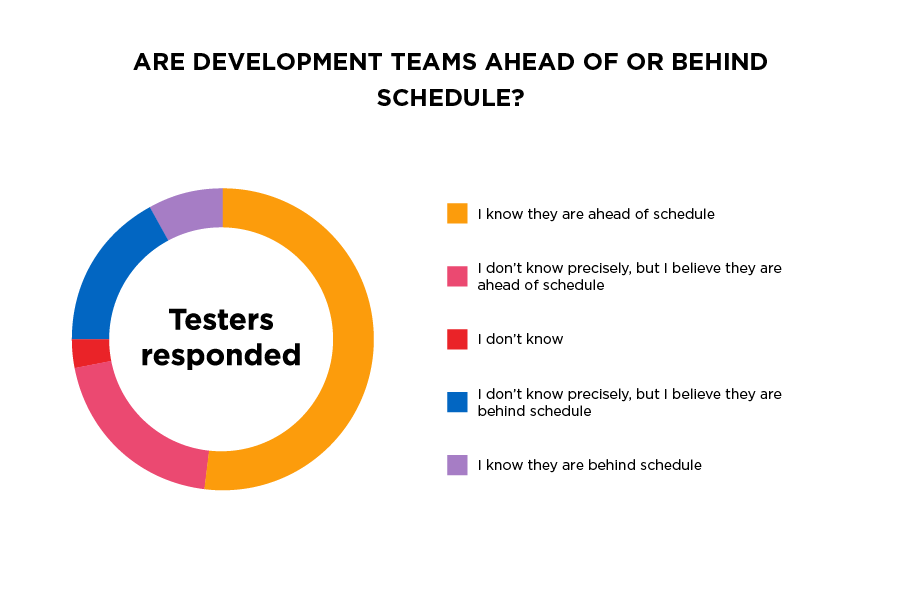
Figure 5
We can also see that development teams feel under pressure and under-supported. However, there is still an opportunity to further empower them. As development teams slowly grow, by an average of three percent in the last year, the next step is to increase transparency and give them the right support and technologies to drive digital transformation goals – from access to cloud services that allow them to execute projects with agility the way they want to, to an open ear in understanding of the pressures they are under, and the freedom to seek what is actually possible.
There are no villains here, just developers and IT leaders who have the potential to work better together and make meaningful progress on digital transformation initiatives. In fact, 30 percent of respondents said that the pandemic had taught them how to empower development teams, but clearly that is not enough. Their next challenge will be understanding how to get developers excited about their work and demonstrating the results. This will include giving developers their desired technologies – which may be precisely why 32 percent are specifically investing in new technology because it will make developers’ jobs easier.
Digital transformation is a long road, and nobody is ever near the end – each completed project opens up new opportunities. Developers’ contribution to digital transformation and strategic success is clear: and the more organizations can address the challenges and complaints they face, the greater that contribution will become.
A key element of this will be improving the developer experience by giving developers the tools they need to be more creative and productive. For instance, using common interfaces such as SQL to avoid steep learning curves. Or using a data platform that offers data in many forms in order to create new application innovations like search and mobile services. They’d certainly like being able to take advantage of the NoSQL scale, performance and flexibility that modern enterprises need. Regardless of whether enterprises are still tied to on-premises databases or want to take full advantage of the cloud, choosing a modern database such as Couchbase will help them realize their full ambitions, and keep expanding from the cloud to mobile and edge computing.